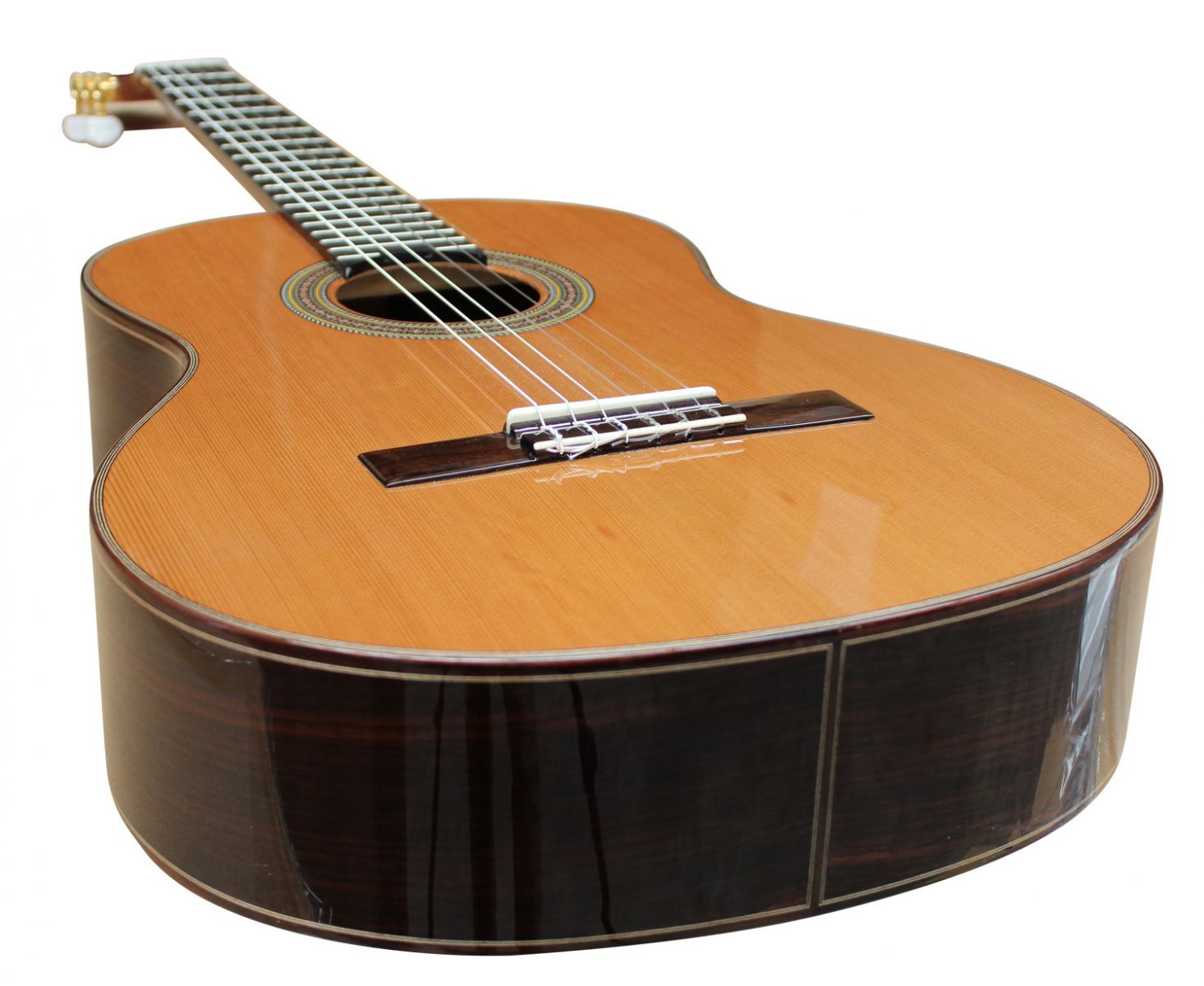What difference does the finish make to my guitar?
Author: Raul Date Posted:25 February 2014
This buying guide will explain the differences of guitar finishes.
Firstly, there are no such thing as a guitar without a lacquer finish, so please don't ask that question in a guitar store or in front of a Luthier or they will give a strange look, I'm saving you that situation, Muso's in guitar shops can be very funny sometimes.
There are two main types of guitar finish:
- Gloss: these are a thicker glossy, shiny finish that is smooth to touch
- Matte: a very thin finish, rough to touch and doesn’t reflect light.
You can also find guitar with a single layer of paint which lies somewhere in between, but thewse are uncommon.
 The best way to understand the difference between matte (satin) finish and gloss finish in sound in simple terms, the sound, feel and tone
The best way to understand the difference between matte (satin) finish and gloss finish in sound in simple terms, the sound, feel and tone are slightly louder with matte finish, but the down side is that matte finish eventually glosses up with use and looks like crap after a while. You can’t polish the guitar clean because you will just gloss it up.
Gloss keeps its look because it's easier to clean... that's it.
The sound difference between matte and gloss are not important, what's important is how much lacquer has been used and what type. That's all you should worry about. Generally speaking, the thicker the lacquer, the more the sound will be choked by the finish. Matte guitars have a thin coating so the finish will have little affect on the wood, compared with gloss finish guitars.
All of our guitars, like all Chinese guitars, are all sprayed in polyurethane. Our acoustic guitars don't have a thick coating so as not to overly choke the resonance. This finish is very weather resistant, and does not require temperature controlled shipping to Australia, part of the reason Chinese guitars are cheaper than American guitars.
When you buy a $3000 plus guitar like a Gibson or Fender, they are sprayed with nitrocellulose, which, aside from being toxic when fresh and requires a special booth to spray, are sprayed and sanded back at least 7-10 times to create a thin finish which allows maximum resonance. But nitrocellulose is very weather reactive and will crack with age, bubble up, are cloud up making it impossible to clean after 30 years if not cleaned every time you finish playing with petroleum based guitar polish like Gibson Guitar polish. But, for the sake of tone you HAVE to live with this.
The single coat paint look, like the Gibson J series, is still just a matte finish that has not had the wood pits filled in to save time, as previously mentioned several sprays and sand backs.
Gloss keeps its look because it's easier to clean... that's it.
The sound difference between matte and gloss are not important, what's important is how much lacquer has been used and what type. That's all you should worry about. Generally speaking, the thicker the lacquer, the more the sound will be choked by the finish. Matte guitars have a thin coating so the finish will have little affect on the wood, compared with gloss finish guitars.
All of our guitars, like all Chinese guitars, are all sprayed in polyurethane. Our acoustic guitars don't have a thick coating so as not to overly choke the resonance. This finish is very weather resistant, and does not require temperature controlled shipping to Australia, part of the reason Chinese guitars are cheaper than American guitars.
When you buy a $3000 plus guitar like a Gibson or Fender, they are sprayed with nitrocellulose, which, aside from being toxic when fresh and requires a special booth to spray, are sprayed and sanded back at least 7-10 times to create a thin finish which allows maximum resonance. But nitrocellulose is very weather reactive and will crack with age, bubble up, are cloud up making it impossible to clean after 30 years if not cleaned every time you finish playing with petroleum based guitar polish like Gibson Guitar polish. But, for the sake of tone you HAVE to live with this.
The single coat paint look, like the Gibson J series, is still just a matte finish that has not had the wood pits filled in to save time, as previously mentioned several sprays and sand backs.
Thanks for reading our report, to give you even more content check our pages below:
I hope this short summary has helped, if you need any assistance please email:
sales@artistguitars.com.au or call us on 0800 025 467
- Join our newsletter to receive hot tips and advice, as well as new products and special offers
- Visit our YouTube channel for some great Demo’s & Tutorials
- Our facebook page to join our community and see news updates, specials and more
- Visit our website
sales@artistguitars.com.au or call us on 0800 025 467
